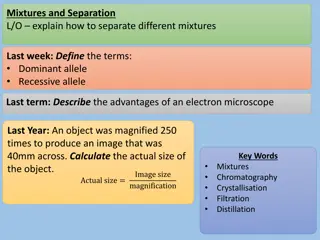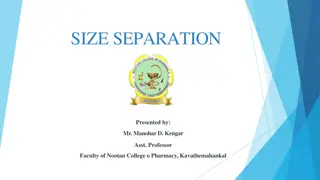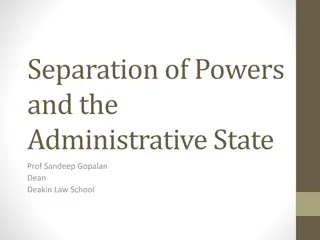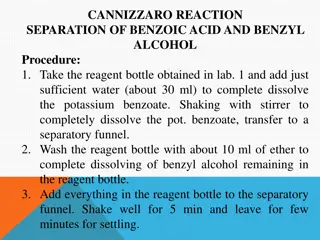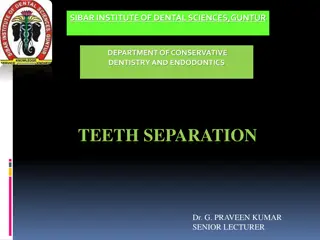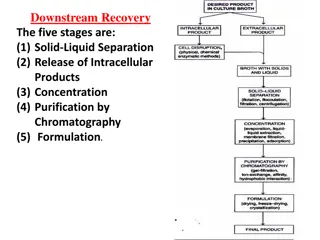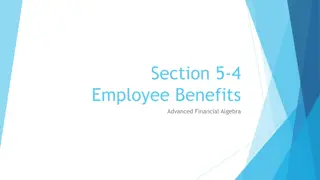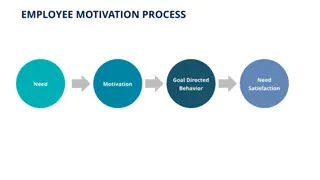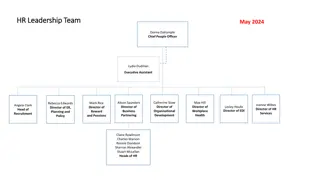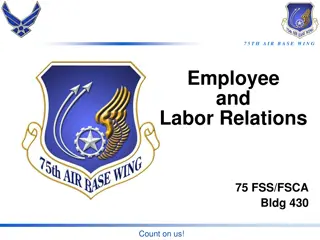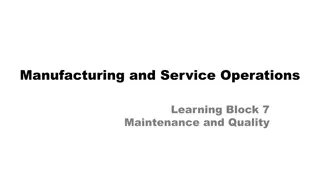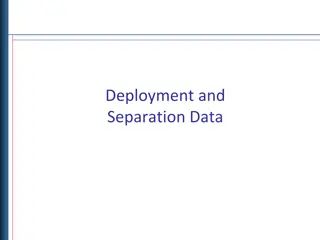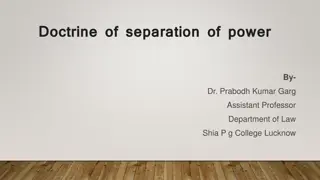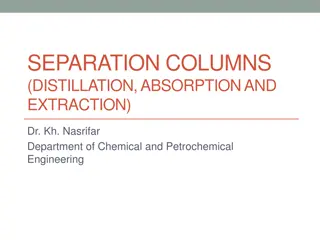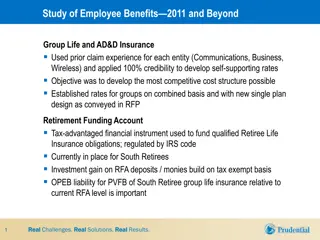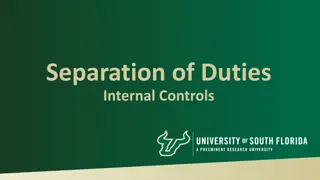Understanding Employee Maintenance and Separation
Employee maintenance involves actions like transfers and promotions, which facilitate career development and job satisfaction. Separation, on the other hand, marks the end of an employee's tenure in an organization and can be voluntary or involuntary. Voluntary separations can be avoidable or unavoidable based on personal reasons or life decisions. Both aspects are crucial in managing workforce dynamics and organizational success.
Download Presentation

Please find below an Image/Link to download the presentation.
The content on the website is provided AS IS for your information and personal use only. It may not be sold, licensed, or shared on other websites without obtaining consent from the author. Download presentation by click this link. If you encounter any issues during the download, it is possible that the publisher has removed the file from their server.
E N D
Presentation Transcript
EMPLOYEE MAINTENANCE AND SEPARATION CHAPTER TEN
Employee Maintenance Employee transfer- refers to the company assigning an employee to a position in a different area of the company. Transfers do not necessarily increase job responsibilities or compensation. Transfers are usually lateral moves, that is, moves to a job with a similar level of responsibility. It may involve relocation to another branch of the company in another part of the country or even to another country.
Employee Maintenance Employee promotion- a promotion involves moving an employee into a position with greater challenges, more responsibility, and more authority than in the previous job. Usually promotions include pay increases. Because promotions improve the person s pay, status, and feelings of accomplishment, employees are more willing to accept promotions than lateral or downward moves.
Employee Maintenance Read from proclamation No. 1156/2019 part five the whole section about : Annual leave Special leave Sick leave
Employee separation An employee separation occurs when an employee ceases to be a member of an organization. The turnover rate is a measure of the rate at which employees leave the firm.
TYPES OF SEPARATION Employee separations can be divided into two categories. 1. Voluntary separations are initiated by the employee. 2. Involuntary separations are initiated by the employer.
VOLUNTARY SEPARATIONS Voluntary separations occur when an employee decides, for personal or professional reasons, to end the relationship with the employer. The decision could be based on the employee obtaining a better job, changing careers, or wanting more time for family or leisure activities. Alternatively, the decision could be based on the employee finding the present job unattractive because of poor working conditions, low pay or benefits, a bad relationship with a supervisor, and so on.
VOLUNTARY SEPARATIONS Voluntary separations can be either avoidable or unavoidable. Unavoidable voluntary separations result from an employee s life decisions that extend beyond an employer s control, such as a spouse s decision to move to a new area that requires a relocation for the employee. The two types of voluntary separations are quits and retirements.
VOLUNTARY SEPARATIONS The decision to quit depends on The employee s level of dissatisfaction with the job The employee can be dissatisfied with the job itself, the job environment, or both. The number of attractive alternatives the employee has outside the organization.
INVOLUNTARY SEPARATIONS An involuntary separation occurs when management decides to terminate its relationship with an employee due to: Economic necessity or Poor fit between the employee and the organization Involuntary separations are the result of very serious and painful decisions that can have a profound effect on the entire organization and especially on the employee who loses his or her job.
INVOLUNTARY SEPARATIONS DISCHARGES - takes place when management decides that there is a poor fit between an employee and the organization. The discharge is a result of either poor performance or the employee s failure to change some unacceptable behavior that management has tried repeatedly to correct.
INVOLUNTARY SEPARATIONS Layoffs- are a means for an organization to cut costs in economic challenges. With a layoff, employees lose their jobs because a change in the company s environment or strategy forces it to reduce its workforce.
THE COSTS OF EMPLOYEE SEPARATIONS The costs can be categorized as recruitment costs, selection costs, training costs, and separation costs. RECRUITMENT COSTS The costs associated with recruiting a replacement may include advertising the job vacancy and using a professional recruiter to travel to various locations (including college campuses). i.e, Recruitment costs include costs such as advertising , campus visits, recruiter time, search firm fees.
THE COSTS OF EMPLOYEE SEPARATIONS SELECTION COSTS: Selection costs are associated with selecting, hiring, and placing a new employee in a job. Interviewing the job applicant includes the costs associated with travel to the interview site and the productivity lost in organizing the interviews and arranging meetings to make selection decisions. i.e., Selection costs include costs such as interviewing, testing, reference checks, relocation.
THE COSTS OF EMPLOYEE SEPARATIONS TRAINING COSTS: most new employees need some specific training to do their job. Training costs also include the costs associated with an orientation to the company s values and culture. Also important are direct training costs specifically, the cost of instruction, books, and materials for training courses. Finally, while new employees are being trained they are not performing at the level of fully trained employees, thus, some productivity is lost. i.e. Training cost include such as, orientation, direct training costs, trainer s time, lost productivity during training.
THE COSTS OF EMPLOYEE SEPARATIONS SEPARATION COSTS: A company incurs separation costs for all employees who leave, whether or not they will be replaced. The largest separation cost is compensation in terms of pay and benefits. Most companies provide severance pay (also called separation pay ) for laid-off employees. Severance pay may add up to several months salary for an experienced employee. Although length of service is the main factor in determining the amount of severance pay, many companies also use formulas that take into account factors such as salary, grade level, and title.
THE COSTS OF EMPLOYEE SEPARATIONS Other separation costs are associated with the administration of the separation itself. Administration often includes an exit interview. exit interview An employee s final interview following separation. The purpose of the interview is to find out the reasons why the employee is leaving (if the separation is voluntary) or to provide counseling and/or assistance in finding a new job (if the separation is due to layoff).
THE BENEFITS OF EMPLOYEE SEPARATIONS REDUCED LABOR COSTS: An organization can reduce its total labor costs by reducing the size of its workforce. Although separation costs in a layoff can be considerable, the salary savings resulting from the elimination of some jobs can easily outweigh the separation pay and other expenditures associated with the layoff.
THE BENEFITS OF EMPLOYEE SEPARATIONS SEPERATION GIVES OPPORTUNITY FOR REPLACING OF POOR PERFORMERS- an integral part of management is identifying poor performers and helping them improve their performance. If an employee does not respond well to interventions that aim to improve his/her performance, it may be best to terminate him /her so that a new and presumably more skilled employee can be brought in.
THE BENEFITS OF EMPLOYEE SEPARATIONS INCREASED INNOVATION: Separations create advancement opportunities for high-performing individuals. They also open up entry-level positions as employees are promoted from within. An important source of innovation in companies is new people hired from the outside who can offer a fresh perspective.
THE BENEFITS OF EMPLOYEE SEPARATIONS THE OPPORTUNITY FOR GREATER DIVERSITY: Separations create opportunities to hire employees from diverse backgrounds and to redistribute the cultural and gender composition of the workforce .
Employee safety and health Read from proclamation 1156/2019 the whole sections about: Occupational Safety, Health and Working Environment Occupational injuries Degree of disablement Benefits in the case of employment injuries Medical benefits Various kinds of cash benefits







